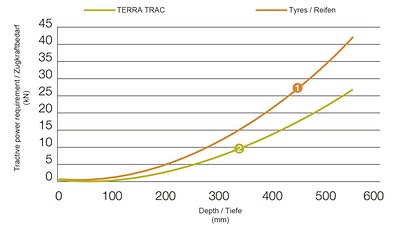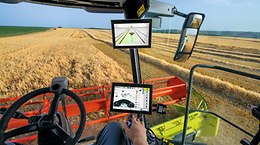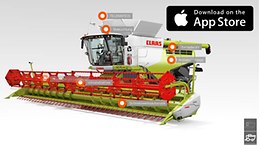

TERRA TRAC on LEXION.
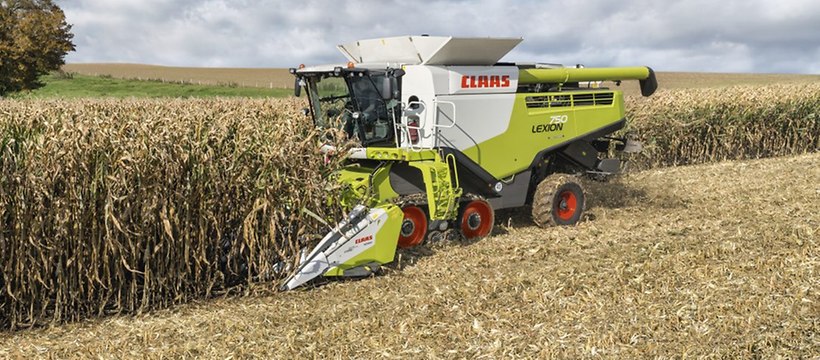
The TERRA TRAC crawler track system has proved itself on combine harvesters in more than 20 years of use in the field and is undergoing constant development to meet the exacting requirements of our customers. Today, about one third of all LEXION combines and half of LEXION HYBRID machines are equipped with TERRA TRAC.
Above all, our customers appreciate:
- Soil protection through 66% less pressure on the soil than that caused by wheeled machines (Cranfield University, 2006)
- Fast transfers between fields at up to 40 km/h with a transport width that complies with road traffic licensing regulations
- High level of driving comfort through the patented geometry and the intelligent suspension concept of the crawler tracks
- Higher seasonal performance through longer working times and greater traction with minimal slippage
- Smooth front attachment guidance and excellent directional stability through smooth handling
- High stability on side slopes through large contact area
- Potential for cost savings through protection of soil structure and reduced power required for subsequent tillage
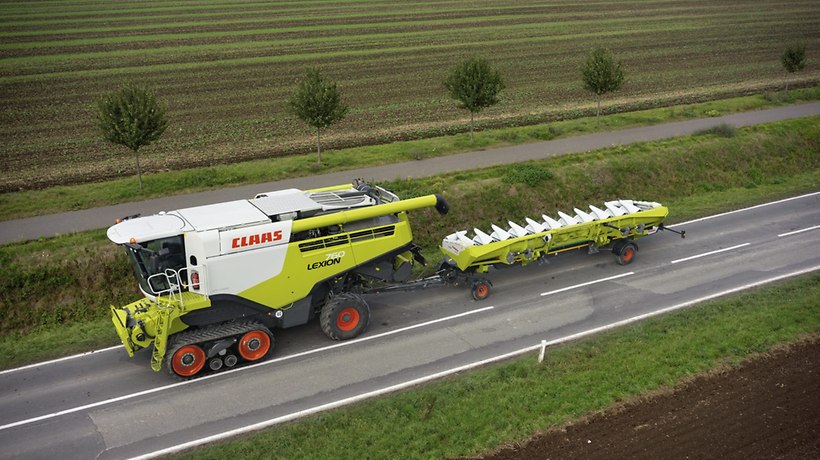
Good driving comfort, high ground speed and compact transport width make transfers easier and faster.
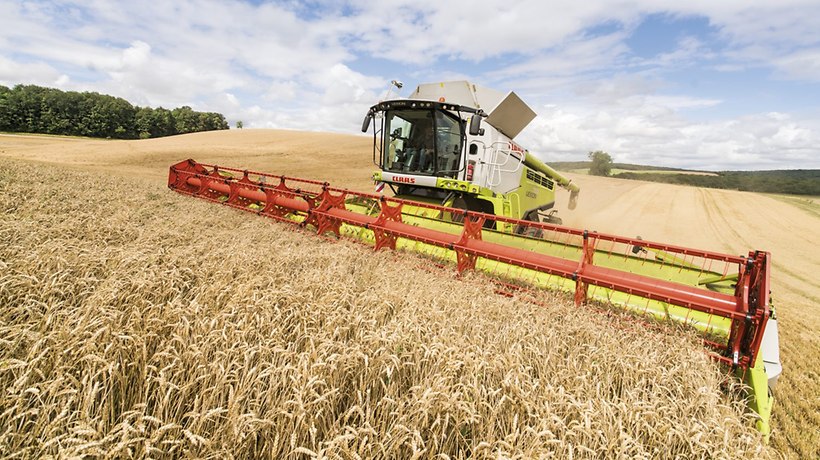
With wide front attachments in particular, the TERRA TRAC crawler tracks make a major contribution to smooth and steady cutterbar guidance.
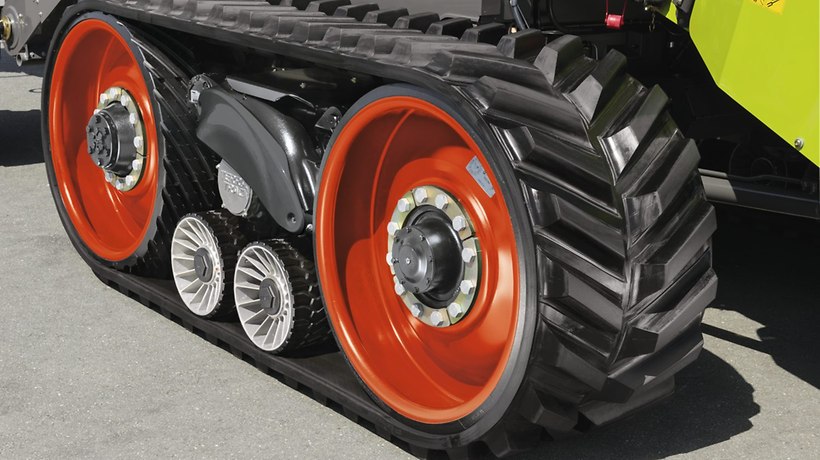
New track: the newly developed track with a modified rib layout is able to withstand the heavy loads encountered during on-road operation for longer.
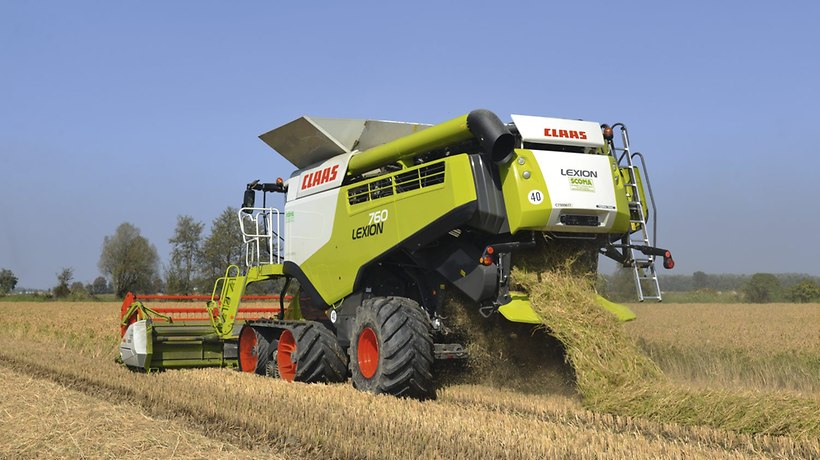
For the four different LEXION models a total of four different TERRA TRAC tracks are available in three widths: 635 mm, 735 mm as well as 890 mm for grain and 890 mm for rice.
LEXION TERRA TRAC put to the test.
It is no accident that TERRA TRAC crawler tracks are the world leaders in the agricultural sector. This drive concept has proved itself a thousand times over in practical use. Its advantages were proved scientifically in a study conducted by Cranfield University at Silsoe in the UK in 2006. This study, which involved using a penetrometer to determine the degree of soil compaction, revealed clear differences between tyres and tracked drives.
- Compared with oversize 800/65 R 32 tyres, the TERRA TRAC crawler track system reduces the soil pressure exerted by the combine harvester by about 66% and maintains it at a soil-friendly 0.8 bar.
- Despite its greater weight, the TERRA TRAC system causes much less soil deformation. The study shows that, at a depth of between 10 and 60 cm, soil deformation was on average 65% less than that observed with 900/60 tyres.
- Crawler tracks initially exhibit greater compaction down to a depth of 12 cm – below which the compaction decreases rapidly. At a depth of 40 cm there is no longer any statistically significant difference in comparison with uncompacted soil. (With tyres, the compaction increases down to 20 cm and remains almost constant down to 70 cm).
- The identifiable soil compaction caused by crawler tracks is kept close to the surface so that the compaction can be eliminated with conventional tillage measures.
- Crawler tracks leave behind them a "roadway", on which the rear tyres run, thereby avoiding additional compaction.
- The drastic reduction in the power required to perform subsequent tillage results in savings on the cost of fuel and labour.
- Measured soil compaction by tyres and crawler tracks
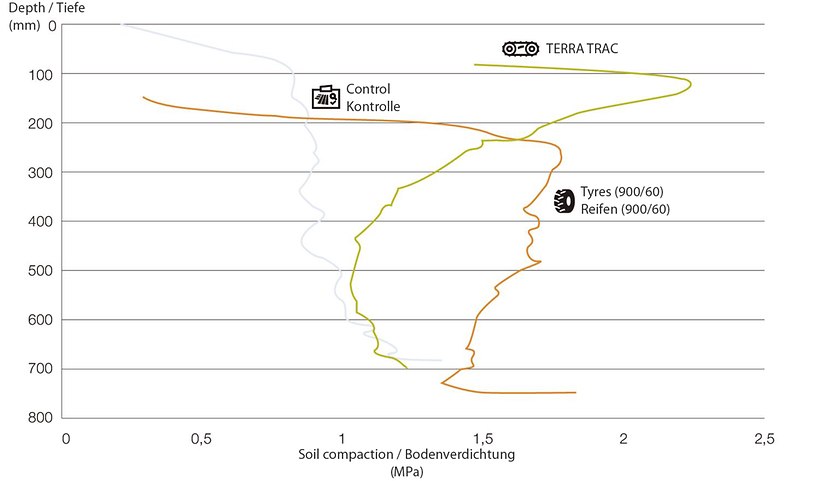
Source: Dirk Ansorge, Cranfield University, Silsoe (2006)
- Measured tractive power required for subsoiling after passage of tyres and crawler tracks
Advantages for subsequent tillage:
The low soil compaction means that fuel and working time can be saved during subsequent tillage. The tractive power required for subsoiling to a depth of 45 cm following a pass by crawler tracks is 36% less than that needed after a combine harvester with tyres has been used. The shallower compaction due to the tracks allows the working depth to be reduced by a whole 10 cm and therefore allows for a further reduction in the tractive power requirement from 240 hp to 88 hp. This represents a 63% reduction in the power required.
Source: Dirk Ansorge, Cranfield University, Silsoe (2006)


